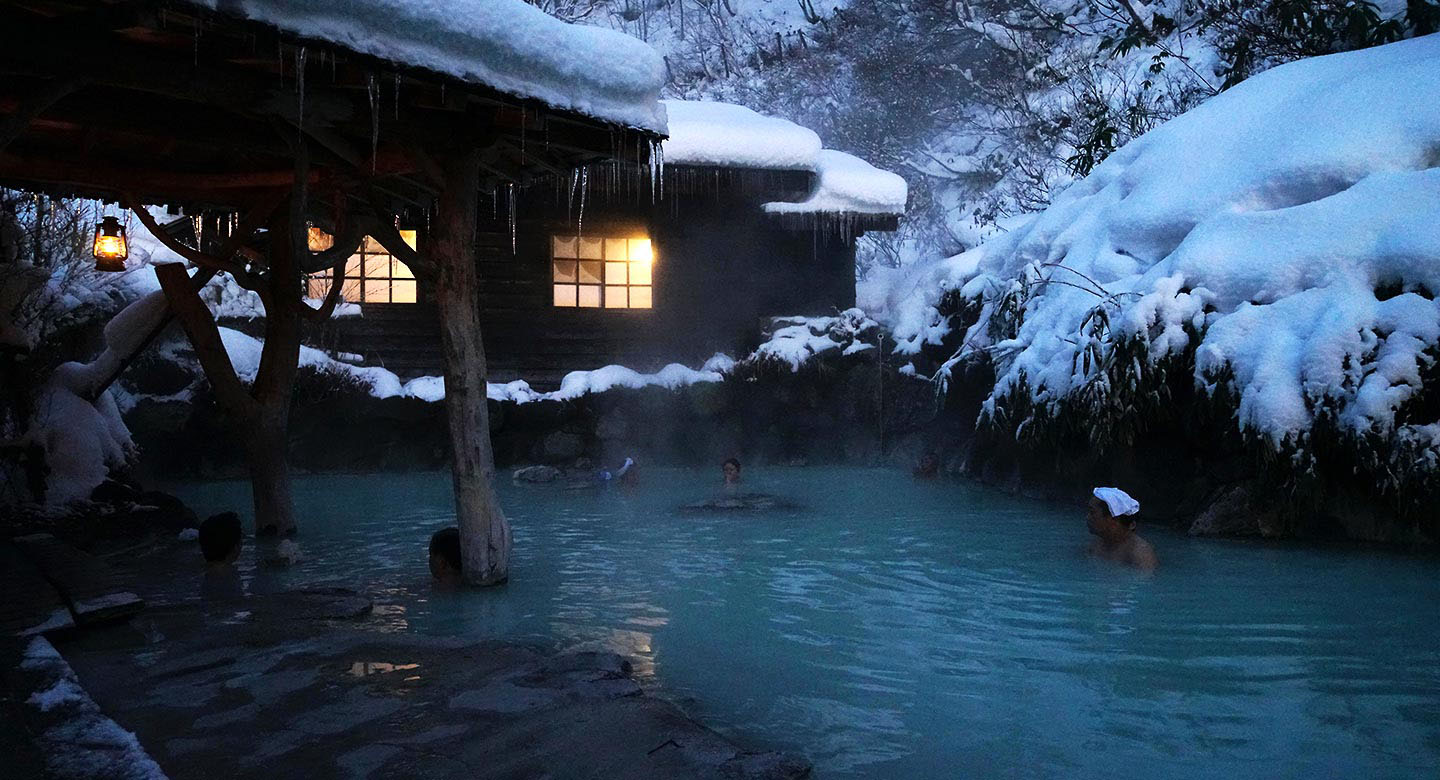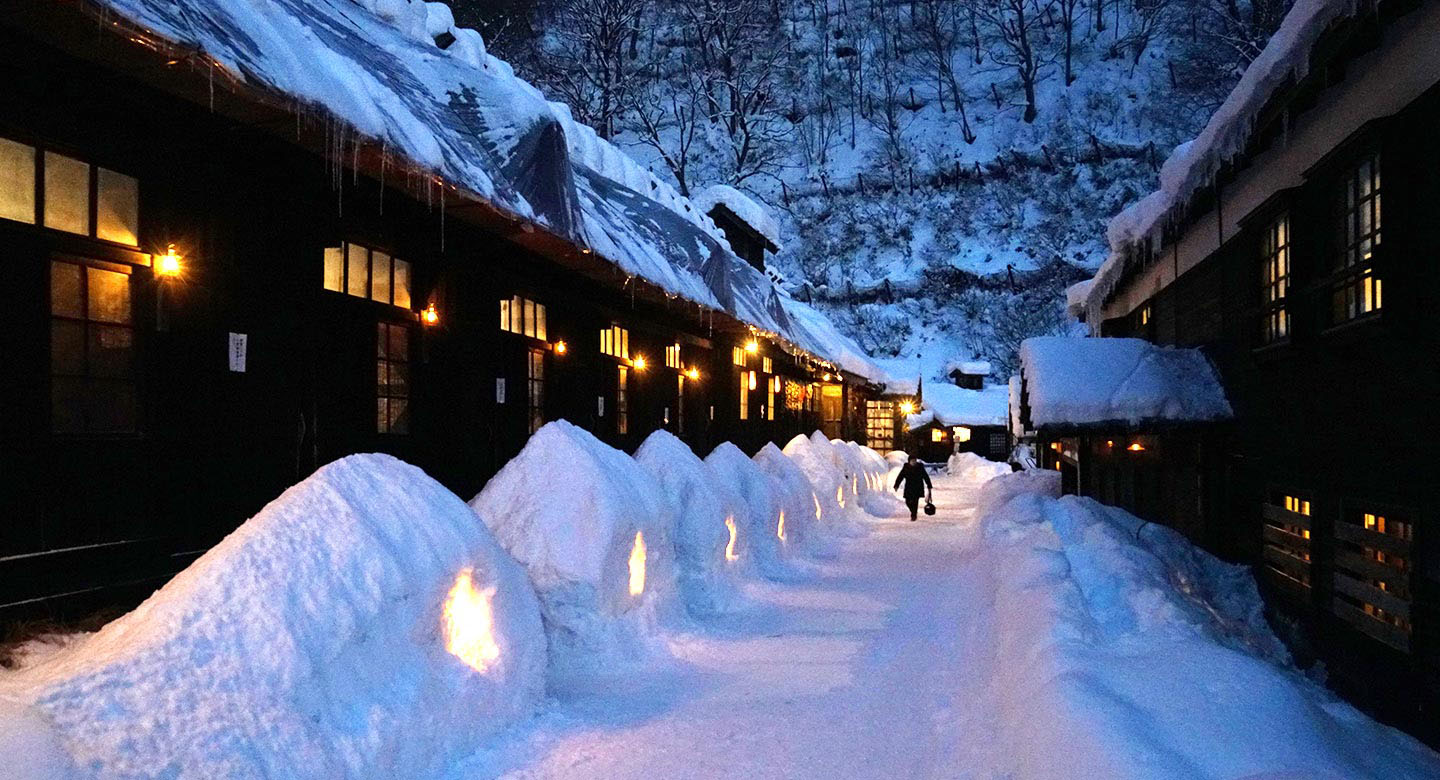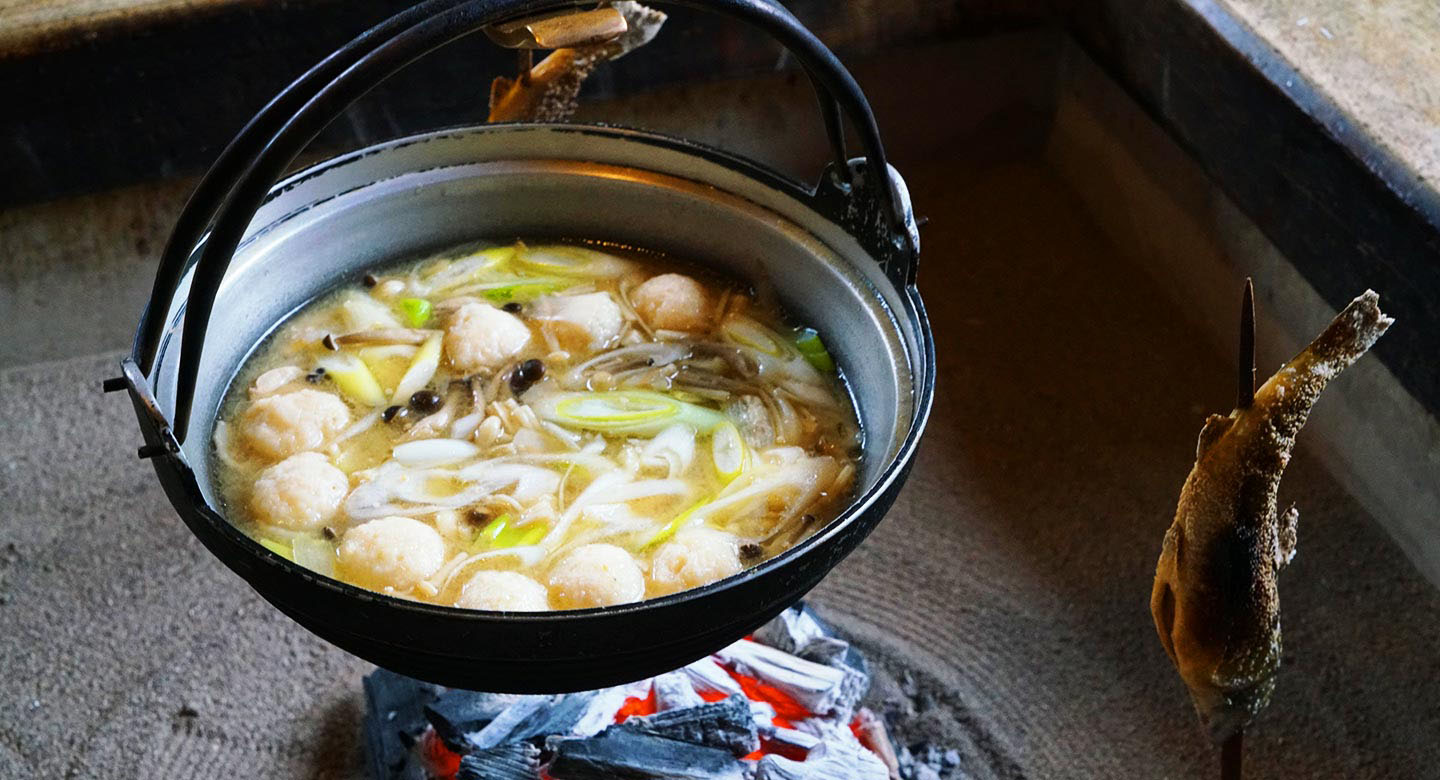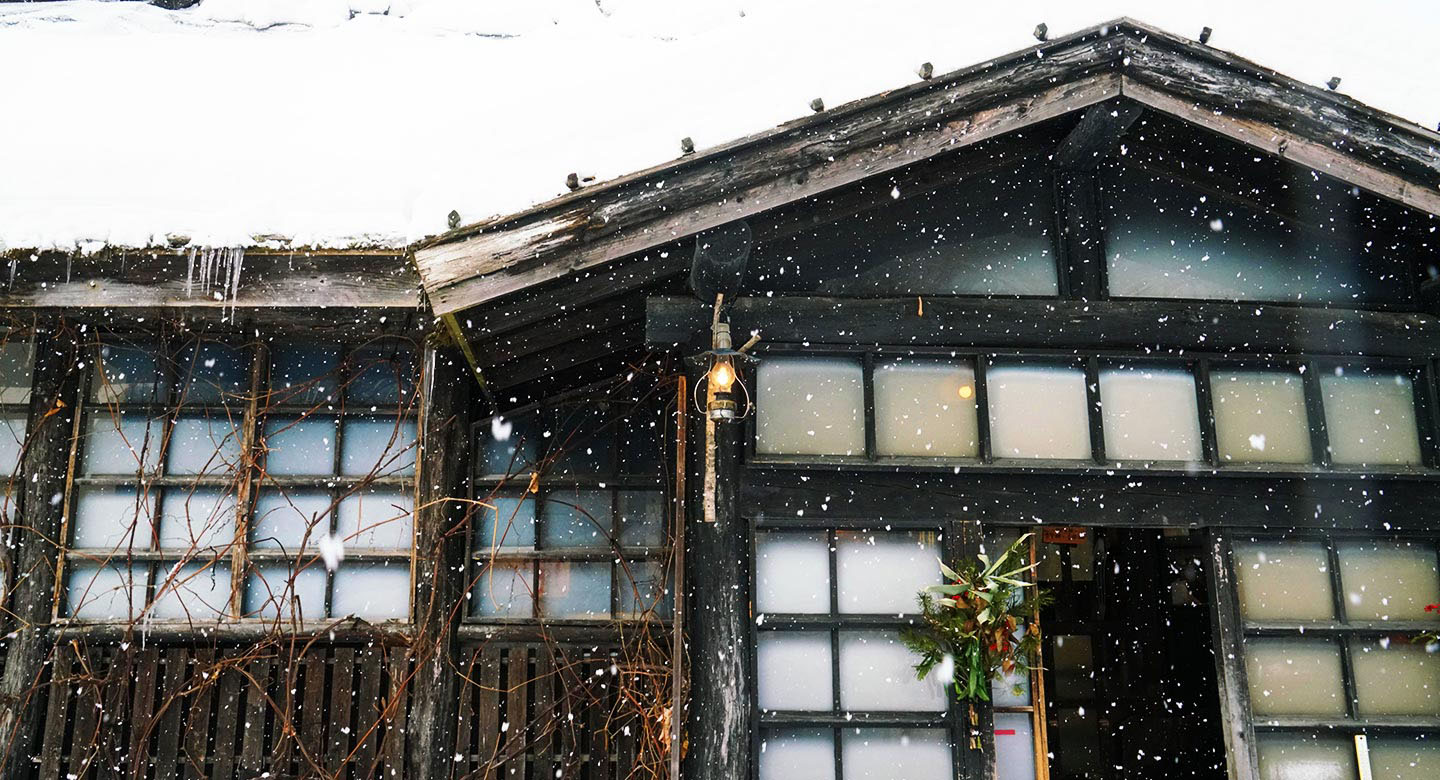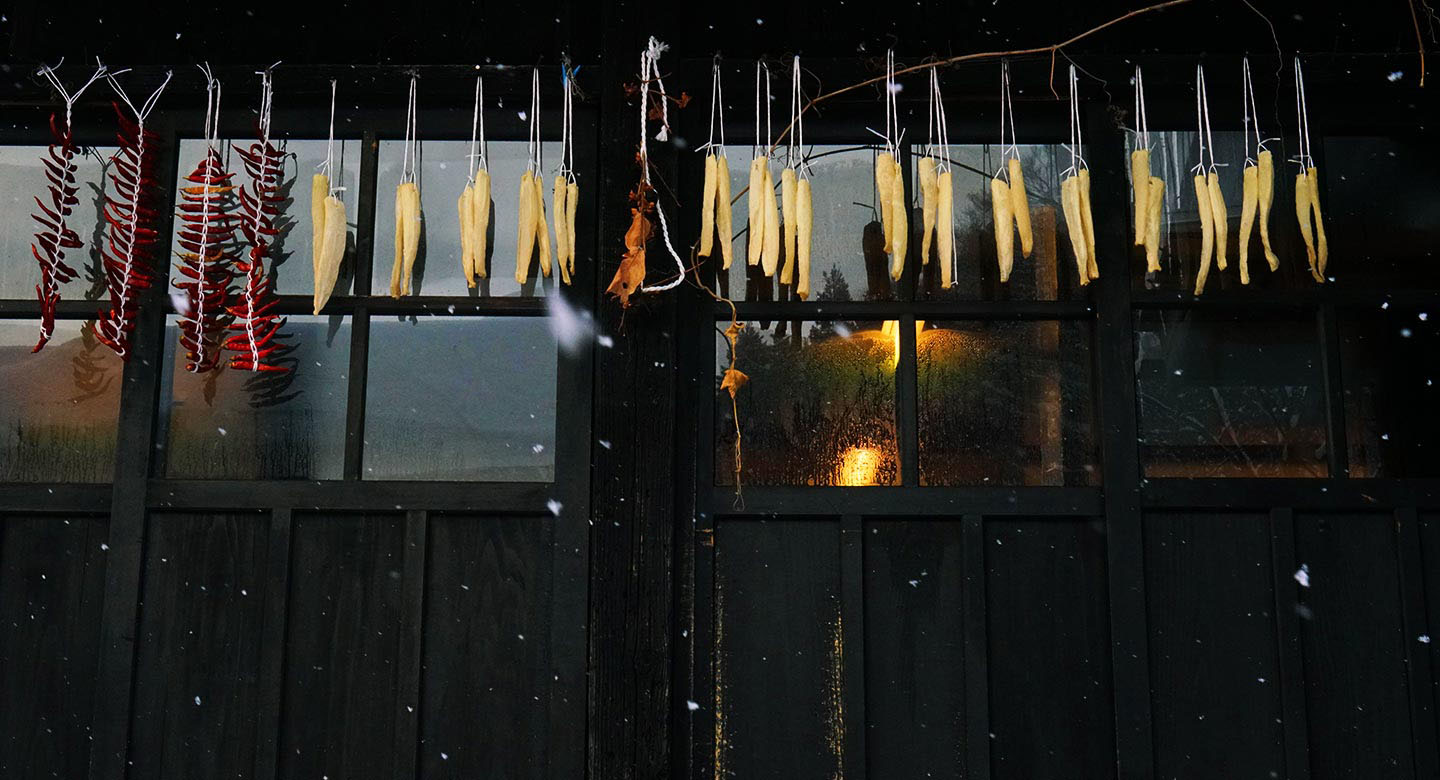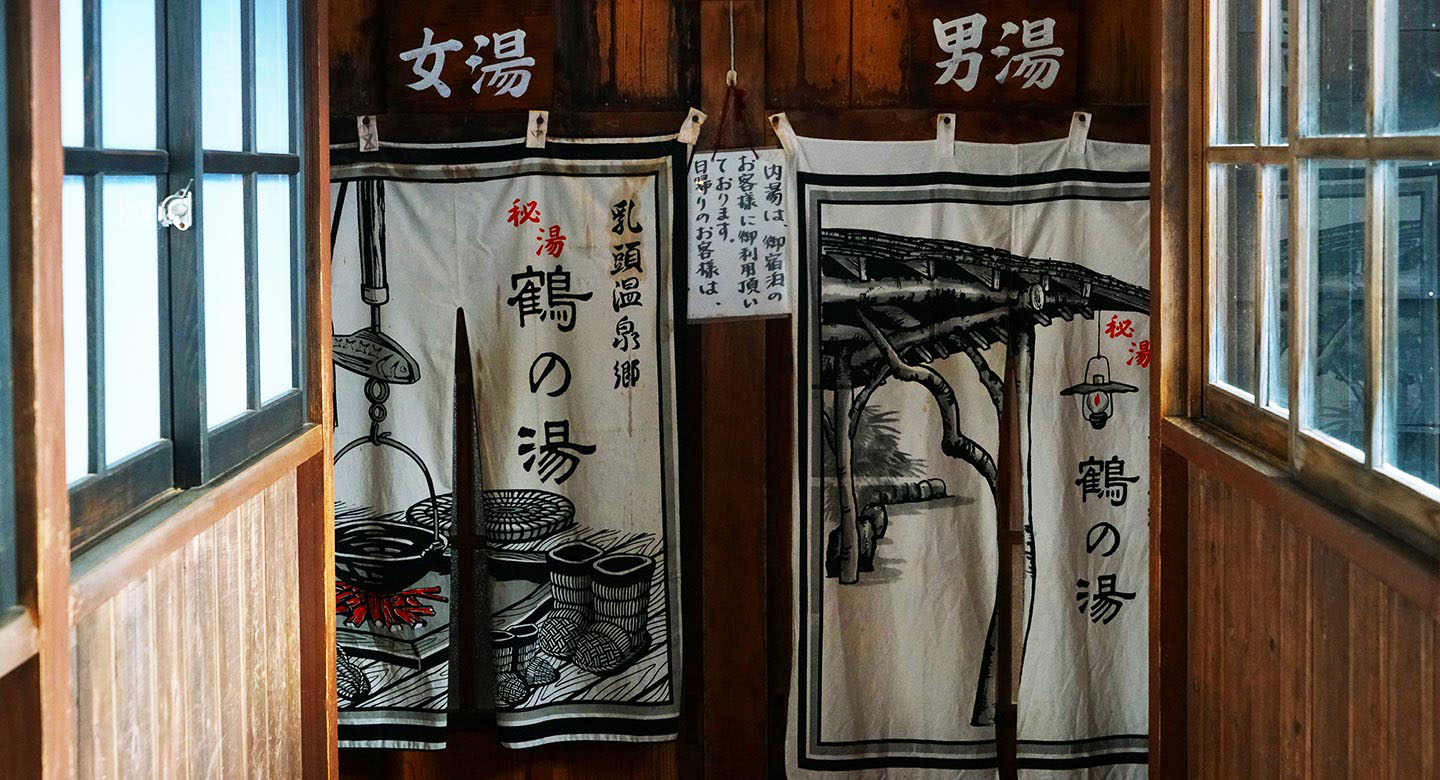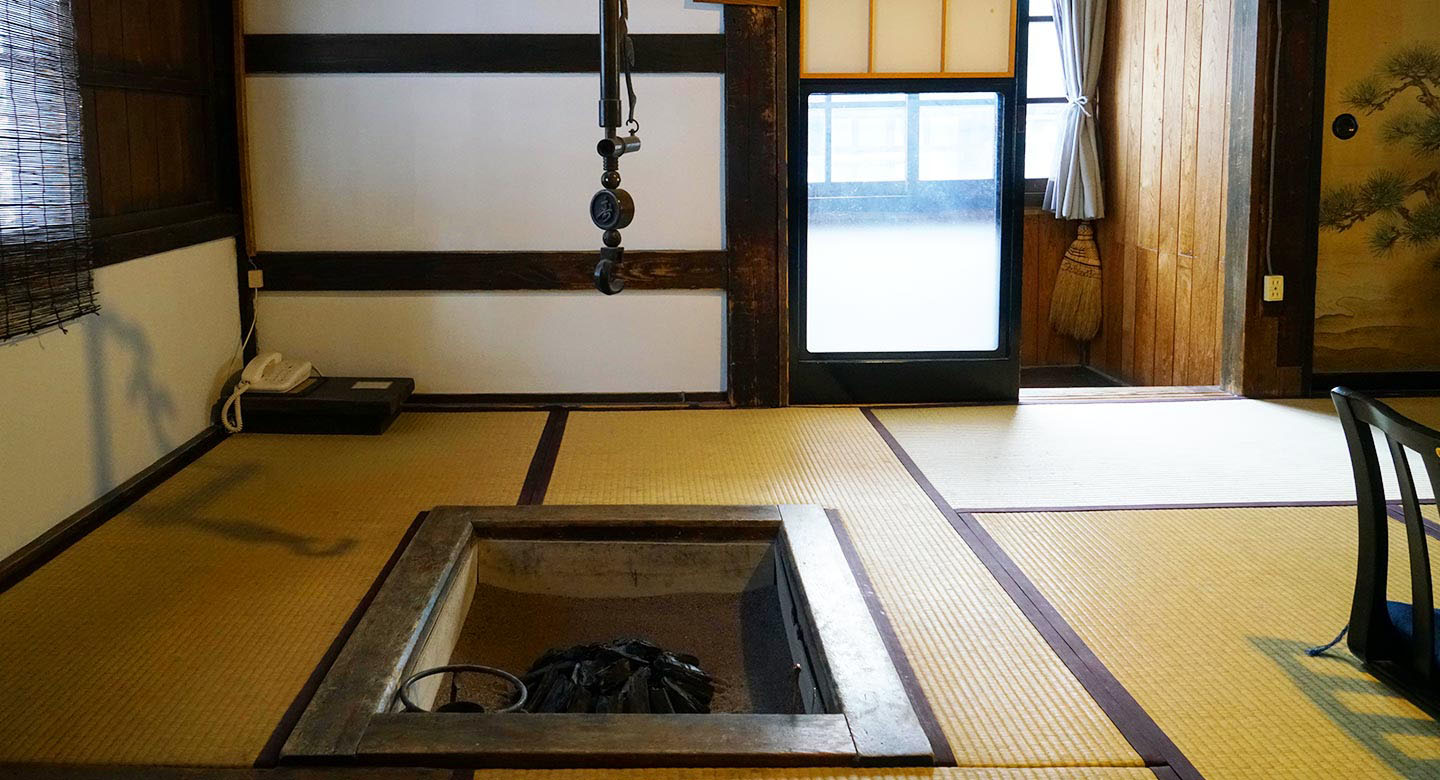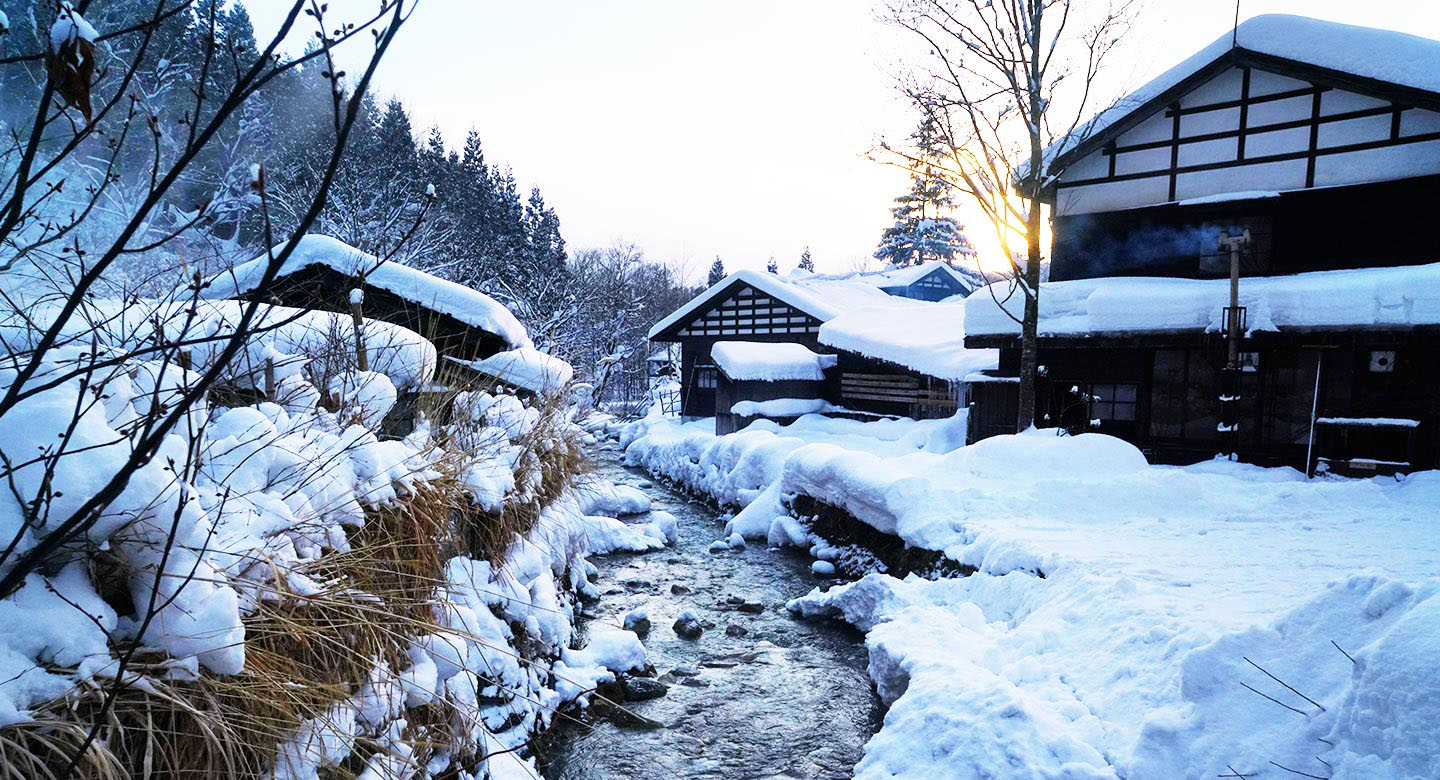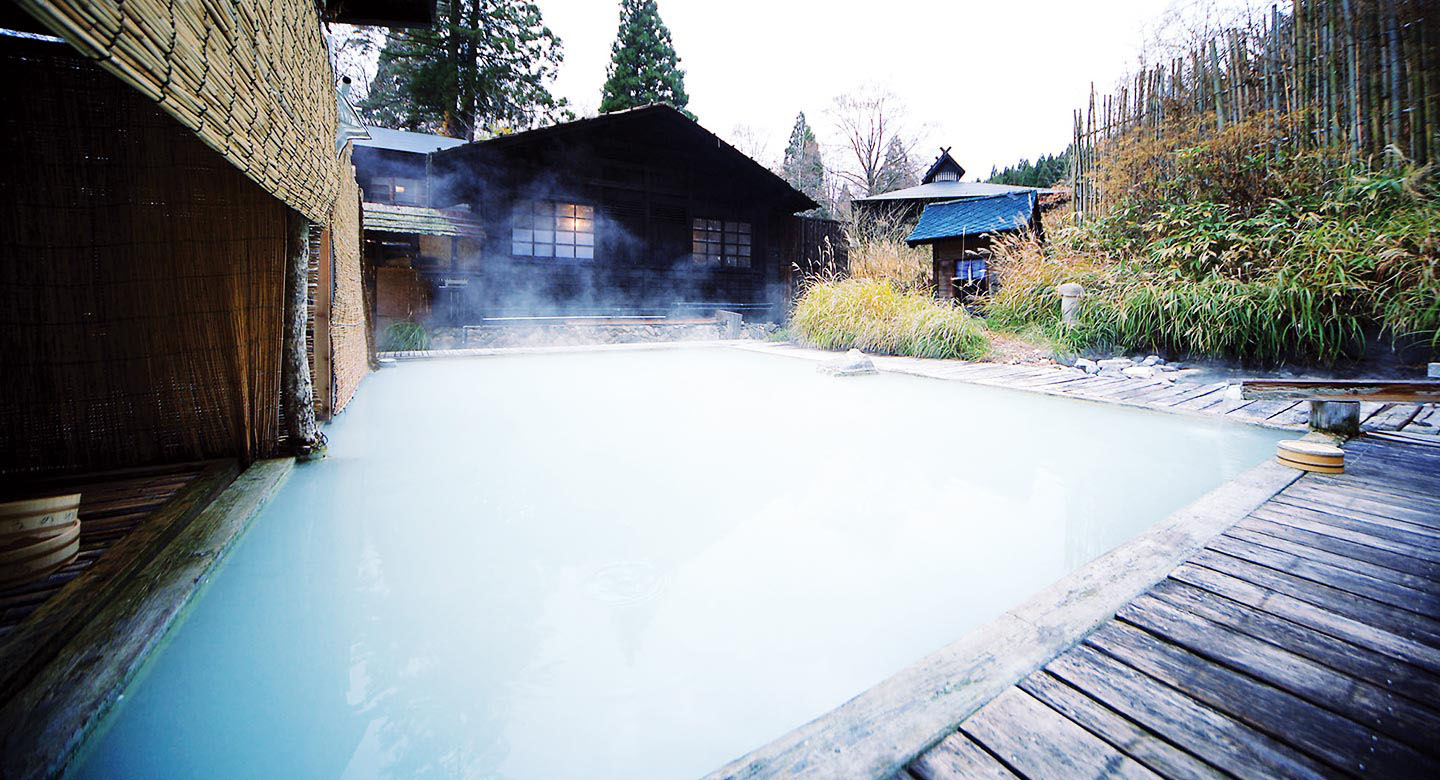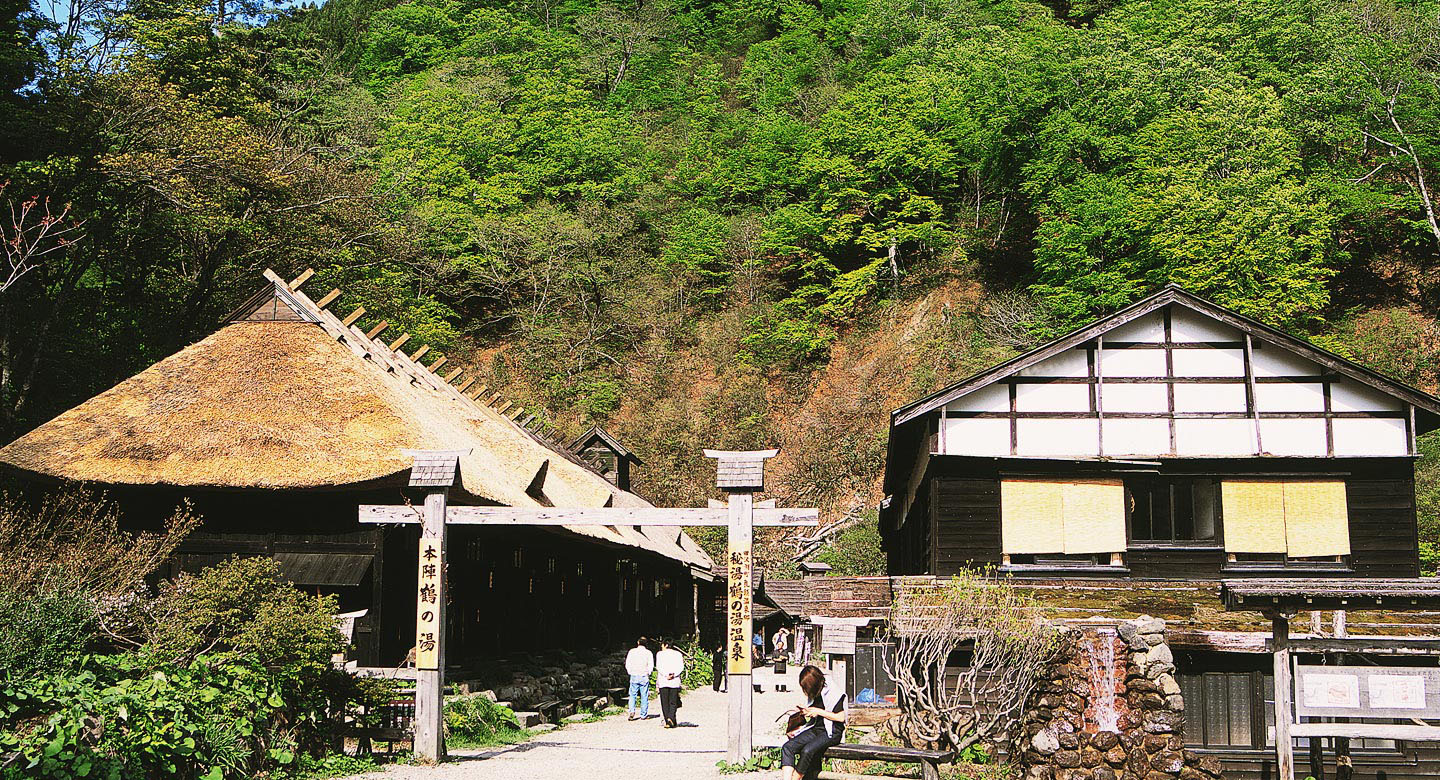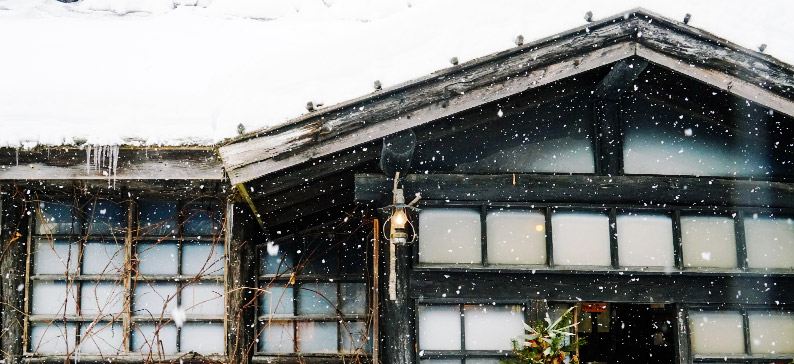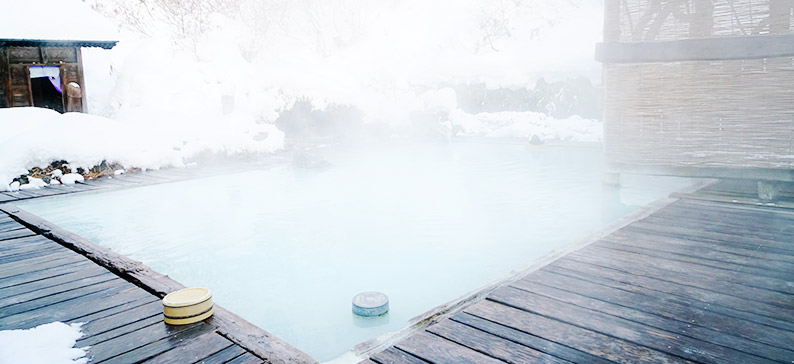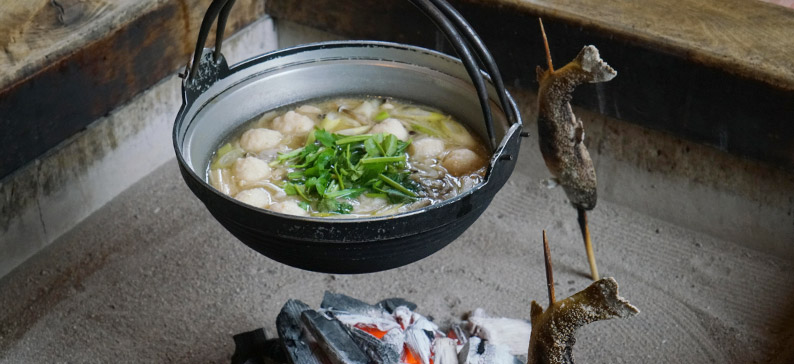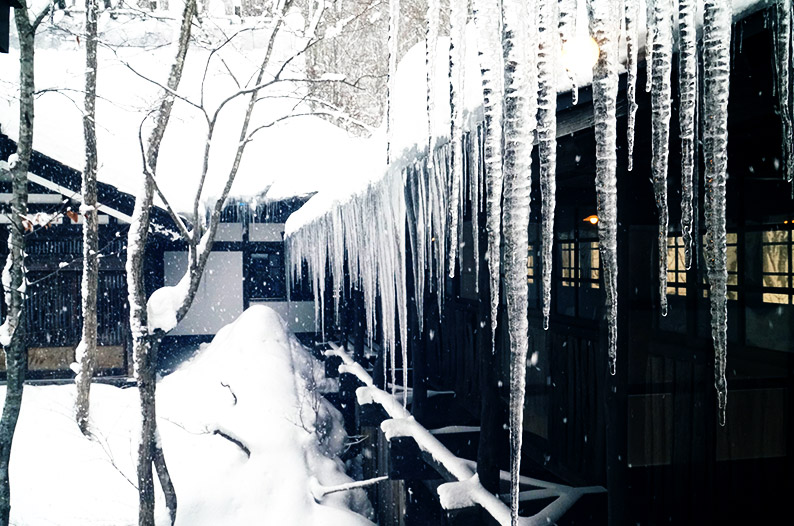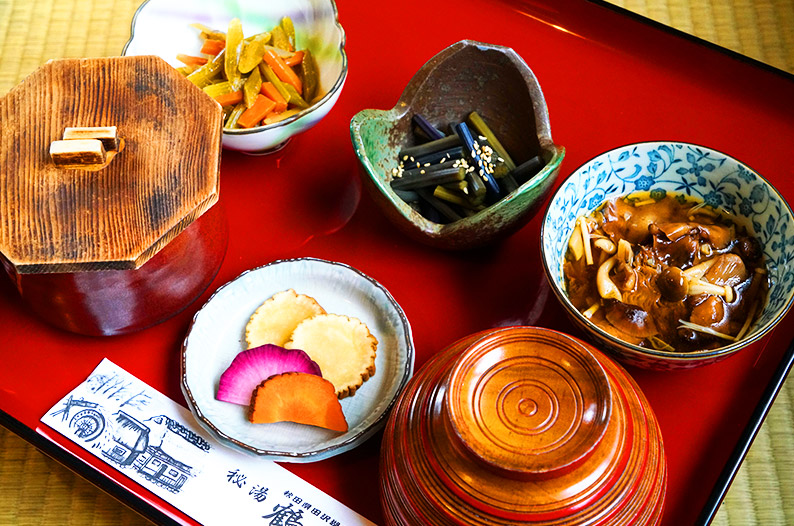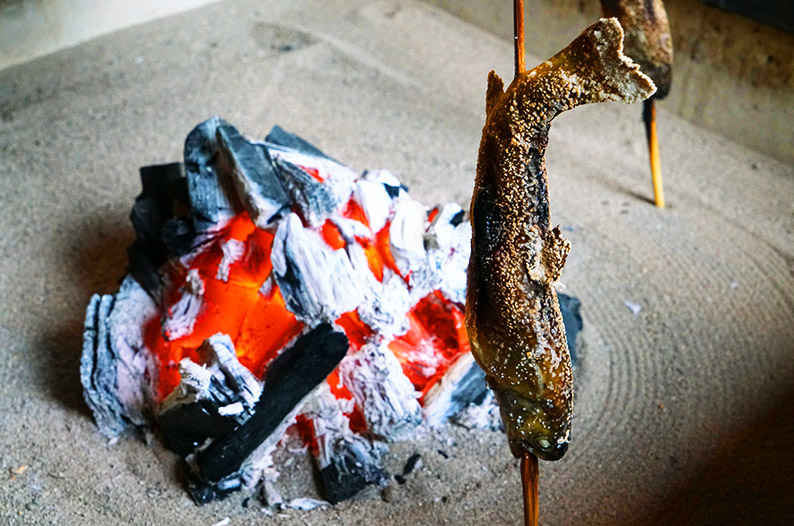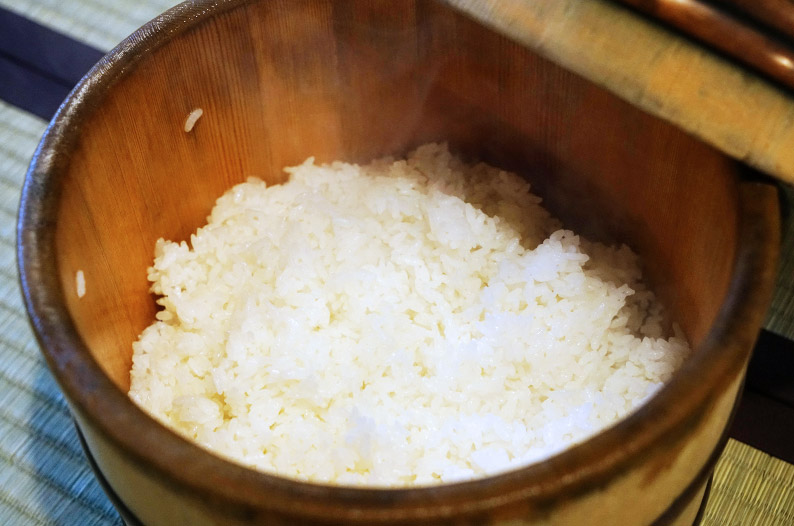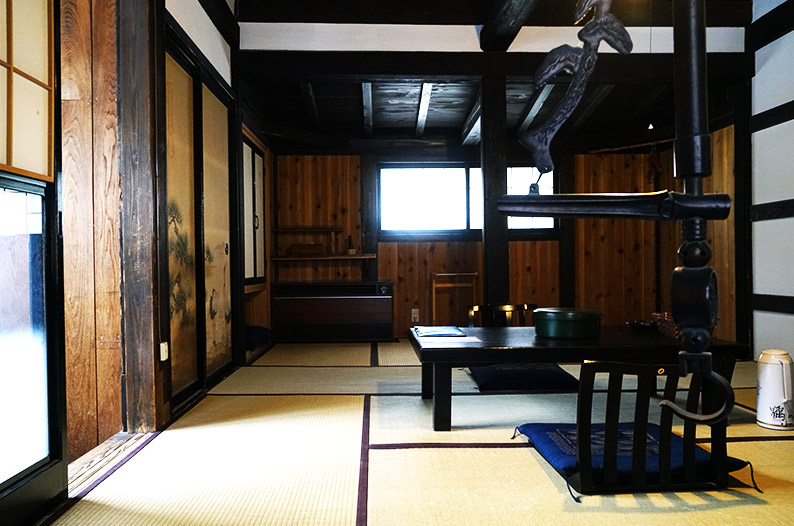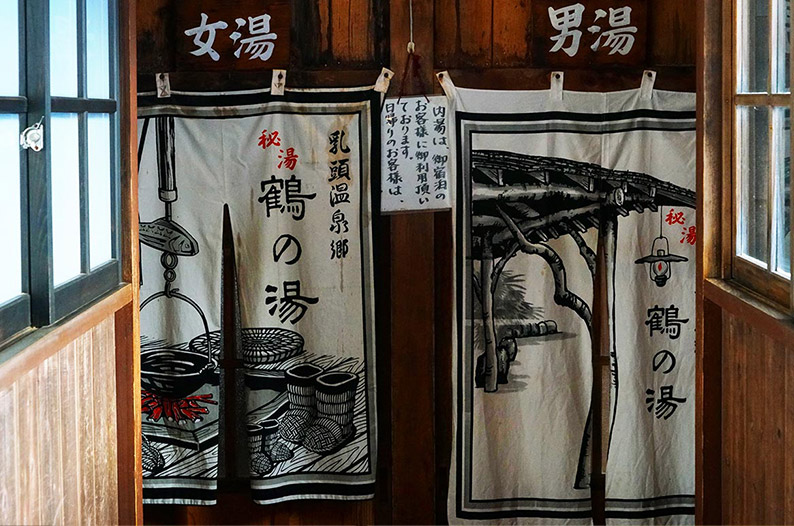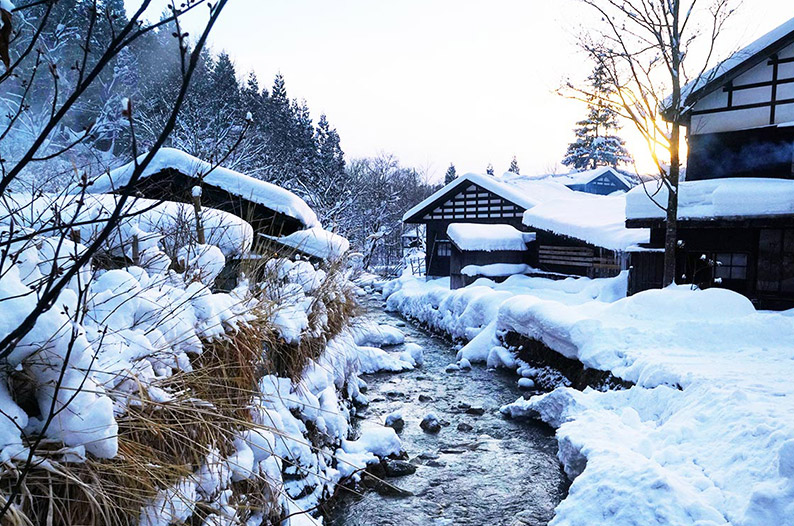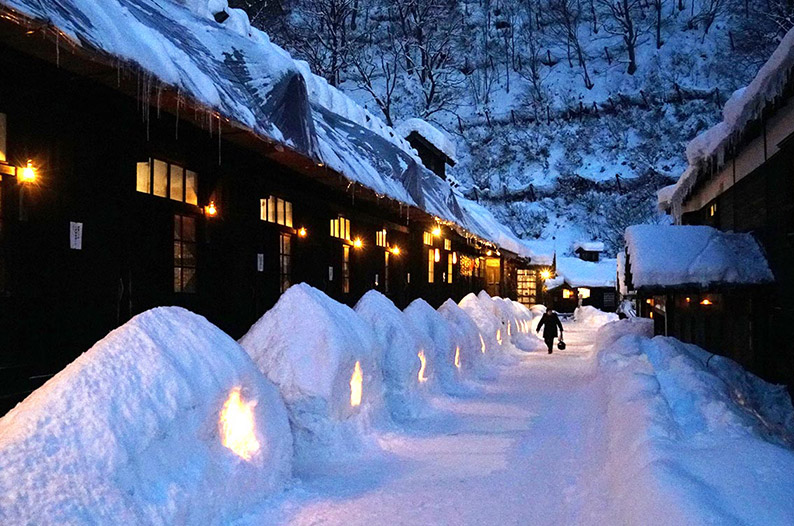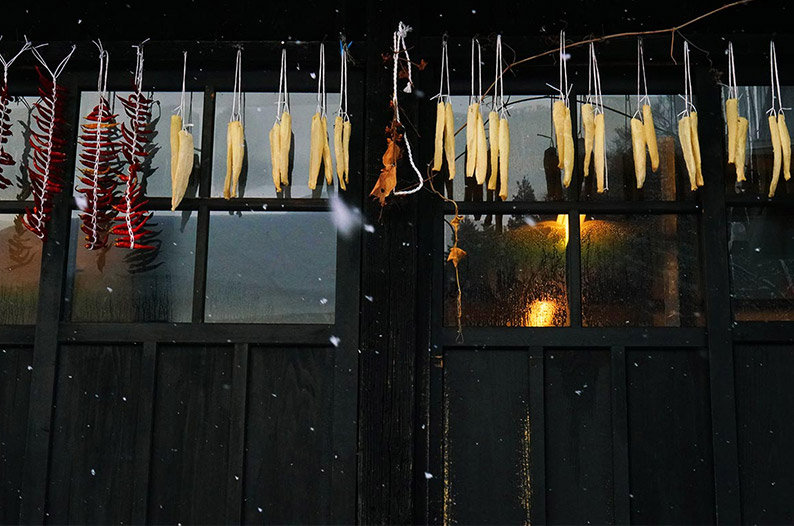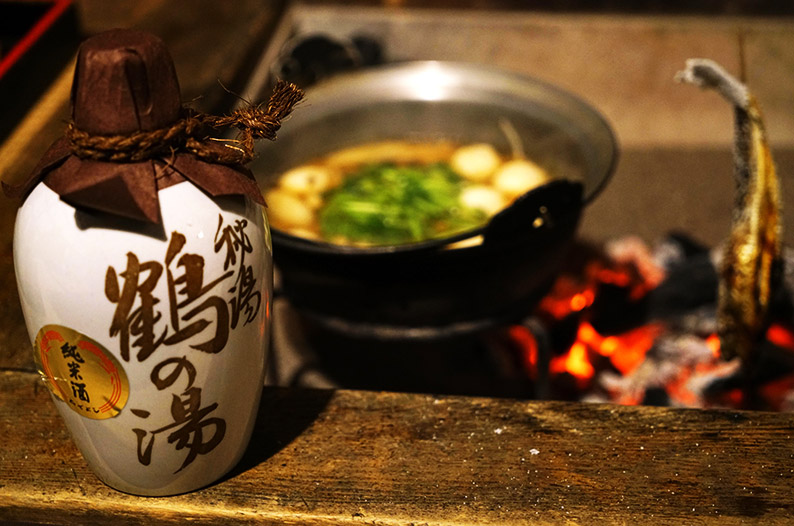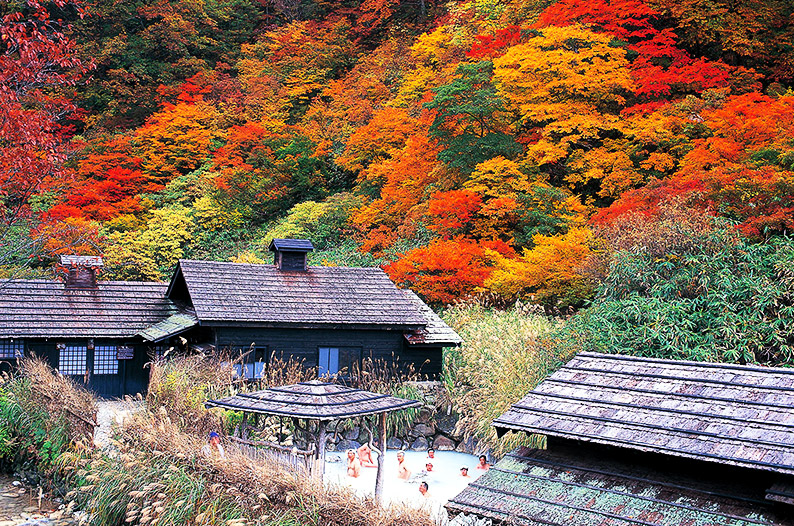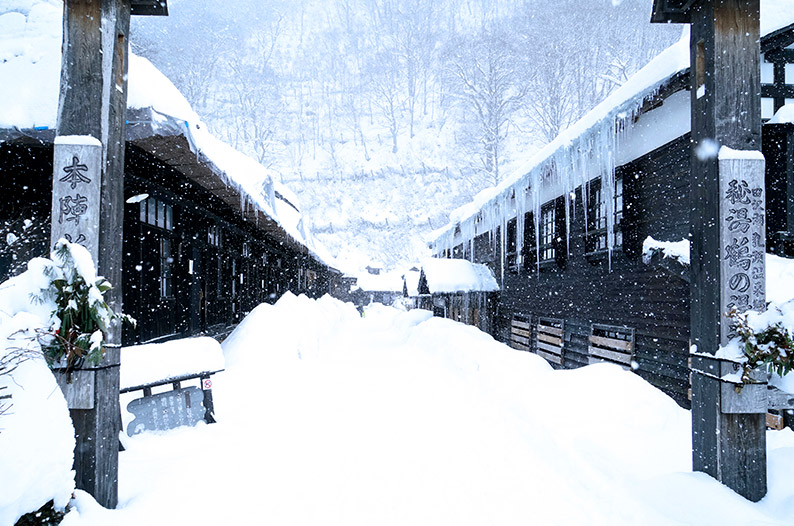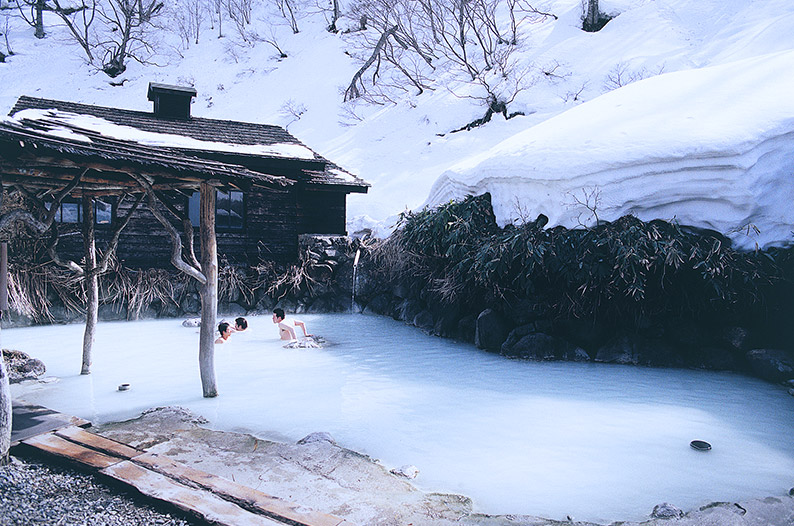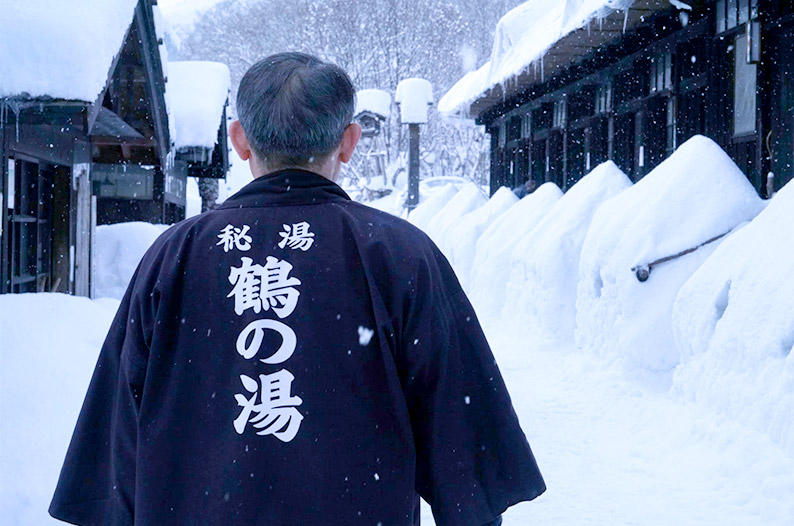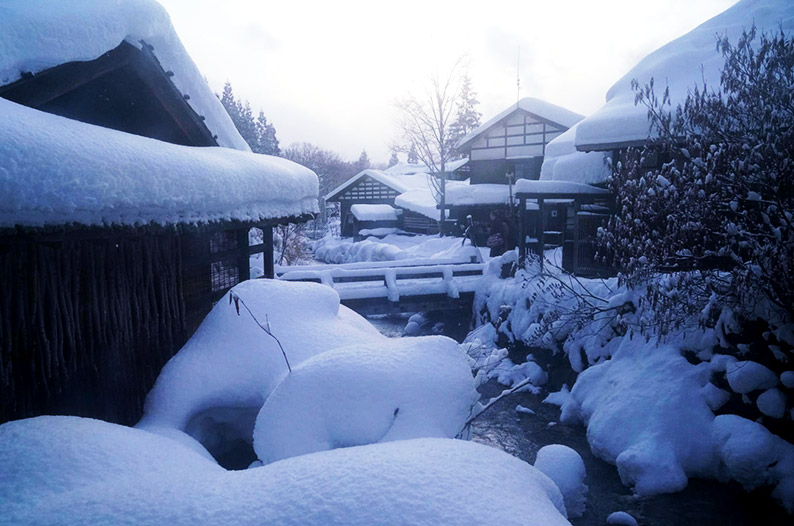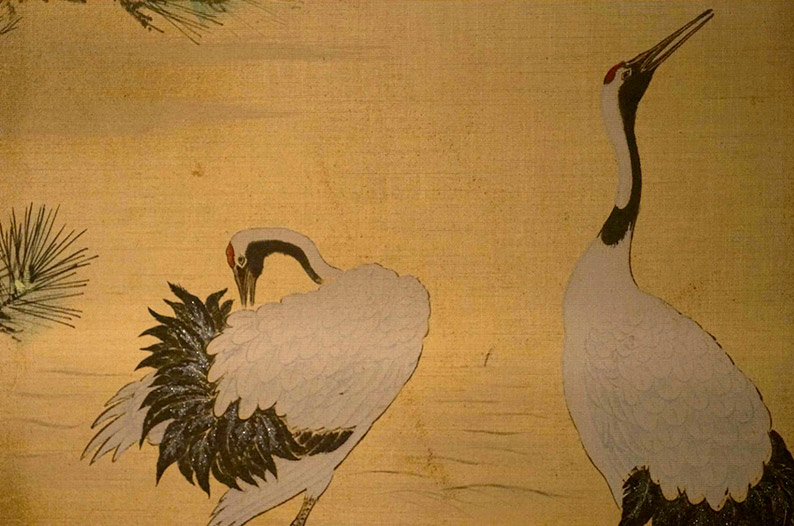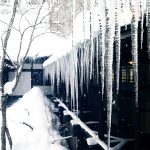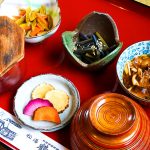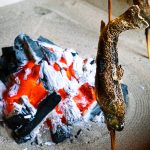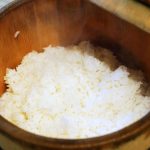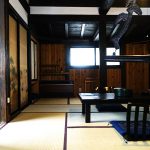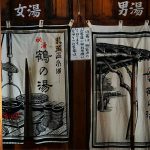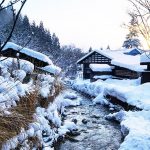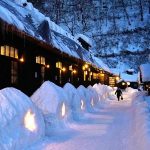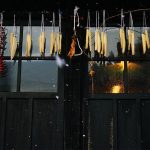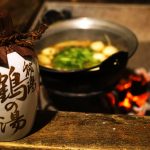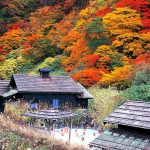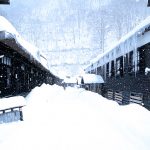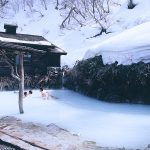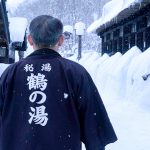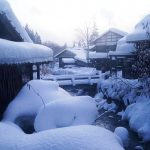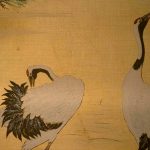Tsurunoyu Onsen
In the outdoor bath, I entrust my entire being to the distant sky and drifting clouds. Looking up, I see a plane. It's hard to believe that I live in the same era as that plane.
AKITA
The Crane's Hot Spring
Tucked away at the base of Mt. Nyuto in Akita Prefecture, Tsurunoyu Onsen is one of Japan’s finest secluded hot springs. Used by feudal warriors of Akita to heal their battle wounds, Tsurunoyu Onsen constitutes more than 300 years of history, making it the oldest of the hot spring villages in Nyuto Onsenkyo. Translated as “the crane’s hot spring,” Tsurunoyu Onsen was first discovered when a local hunter saw a crane healing its wounds in the water.
A four-hour ride on the Shinkansen Bullet Train from Tokyo, I arrive at Tazawako Station. Just like Tokyo – no snow. I shake off my disappointment and board the bus that will take me to the inn. After 40 minutes of watching serene landscapes pass by, the view suddenly changes. The distant horizon has disappeared, and we are in a silvery white universe. The bus, indifferent to our surprise, carries us deeper and deeper into the mountains. At last, we arrive. Stepping off the bus, Tsurunoyu Onsen’s main lodge appears with its thatched roof covered in thick snow. Maintaining the same structure and elegance since the Edo Period (1603-1868), the inn’s exterior evokes the illusion of slipping back a few centuries.
I’m astounded. The original wooden walls of the main lodge gleam in majestic black. Three hundred and fifty years after its construction, this building continues to accommodate guests. Its presence is so powerful; nothing like this exists in Tokyo.
I notice that my cellphone is out of range. No Wifi either. A part of me feels helpless, but the other part of me is relieved to leave behind my hectic life of incessant phone calls and constant battles against the clock.
Every single building at Tsurunoyu Onsen is made out of wood. Surrounding the main lodge, intact and functional since the Edo Period, are numerous hot spring bungalows where farmers and merchants stayed to heal their illnesses and wounds. At the reception desk, Seiei Suzuki tells me that before modern medicine became accessible, people desperate for a cure came from all over Japan to soak in Tsurunoyu’s waters. Despite being a tiny inn tucked away in the mountains, the hospitality is no different than that of a first-class hotel. The staff are remarkably warm and welcoming, promptly responding to guests’ needs and desires before they even had a chance to voice them. Today, Tsurunoyu has become a well-known hot spring inn, but it’s had its fair share of financial difficulties and destructive fires. The manager, Kazushi Sato, was deeply influenced by the tireless efforts at resorts he visited in European to protect their pristine views as well as their guests’ privacy. He incorporated this spirit to Tsurunoyu when he restructured the business several years ago.
Walking in the grounds, I see the staff carefully removing snow from roofs and cutting off sharp icicles extending towards the ground. This region is known for its heavy snowfall, so heavy that Tsurunoyu used to close for the winter season until a few years ago. Twenty years ago, some of the bungalows were crushed by the heavy snow. It’s a miracle just to be able to come and stay here.
I’m suddenly overcome with the desire to soak my body in Japan’s best secluded hot spring. As if competing with the large snow flakes, the steam rising from the bath is thick as it climbs skyward. I remove my watch and my sense of time, and become completely carefree.
White, Black, Middle and Waterfall; the four sources at Tsurunoyu have such poetic names. I first dip into the women-only bath, Kodakara-no-yu (“blessed with children”). Also known as Yudomari-no-yu (“where heat accumulates”), thousands of women have soaked in this water, reputed to cure infertility because it keeps your body warm for hours after you dry off. A small shrine, revering a symbol in the shape of the male sex, reflects the visitors’ prayers to be blessed with a child.
At the outdoor bath, surrounded by lofty mountains, I entrust my entire being to the distant sky and drifting clouds. Looking up, I see a plane. It’s hard to believe that I live in the same era as that plane. Perhaps this is a mirage.
The water from the Black source is so gentle and velvety, I could soak in it for hours. As I expose the upper half of my body to the cold air, I notice that the immaculately white water has gone emerald green. Am I imagining this? I kick my feet in the water to check. It happens again. I later learn that this water is black when the weather is bad, but white when it’s sunny. In the old days, people used to forecast the weather depending on the color of the water.
I continue soaking in the bath and close my eyes. Suddenly, the quiet winter landscape starts to groan. Cold snow starts to blow and pierces my body. It’s snowing so hard that I can barely open my eyes. Then, just as suddenly as it started, the stillness returns. Mother Nature is showing her whimsical side, which can at times be brutal. I realize just how amazing it is that Tsurunoyu has continued to exist over the centuries, undoubtedly thanks to the intention of its keepers to both protect it from and to coexist with snow.
I take a break before trying the emblem of Tsurunoyu; the mixed outdoor bath. This bath uses the white hot spring source, known as the Water of Beauty. I hesitate at the thought of a mixed bath, but you can’t see anyone coming in because of the white steam rising from the bath. The intense smell of sulfur; a slight acidic taste. The openness of the outdoor bath is complemented by the cloudy white water carrying a hint of green. Small bubbles rise from the bottom of the bath. I try to scoop the bubbles, but they escape and reappear nearby. It’s the hot spring water dancing. I relish its capricious rhythm.
I savor the time I spend soaking in the hot springs. I guess I’ve been a bit busy lately. This place melts away the armor that had surrounded my heart.
Dinner is served in a room with a hearth. On the menu: fish grilled over charcoal fire, and stew made from grated yam and taro. The gentle scent of potatoes fills the room. It isn’t a glamorous dinner by any means. But using local ingredients and cooking methods, each dish is prepared with care and warms my heart.
I don’t have my cell phone or TV, but I do have my iTunes and a book. Reading under the orange light, iTunes starts playing the music of cellist Jacqueline du Pré. Dedicating her short life to cello music, Jacqueline once said, “I feel like I’m going to burst to the beauty of music.” This is perhaps the first time I truly felt the beauty of her music, whose delicate notes harmonize with the quiet snowfall.
In the depth of the nocturnal darkness, I fall into a profound sleep. Within my heart, the frenzy of modern life has been replaced by a breadth, a space to savor the small but important things in life. I won’t forget what I experienced here: unspoilt landscapes, the gentle flow of time. I don’t want to go back to a universe based on time – not just yet. I promise myself to come back here again before I forget this sensation.
by Mariko Kobayashi, translated by Maho Harada
April 30, 2016
Tsurunoyu Onsen information
Address
50 Kokuyurin,Sendatsuizawa,Tazawa Aza,Senboku-shi,Akita-ken
TEL:+81-187-46-2139
http://www.tsurunoyu.com/
| Number of rooms | 35 |
|---|---|
| Internet | no internet |
| Credit card | ok |
| Check in/out | in 3:00pm out 10:00am |
| Language | English available |
| Price range |
Recommended restaurants
Takamura (traditional Japanese) - 1-7-31, Omachi, Akita-shi, Akita-ken - TEL: 018-866-8288
Hamanoya (traditional Japanese) - 4-2-11 Omachi, Akita-shi, Akita-ken - TEL: 018-862-6611
Syuhai (izakaya) - 1-6-9, Sanno, Akita-shi, Akita-ken - TEL: 018-863-1547
Hinaiya (izakaya) - 4-2-2, Omachi, Akita-shi, Akita-ken - TEL: 018-823-1718
Gyugentei (Japanese barbecue) - 2-6-44-2F, Nakadori, Akita-shi, Akita-ken - TEL: 018-893-3929
N. (izakaya) - 5-5-39, Nakadori, Akita-shi, Akita-ken - TEL: 018-831-5665
Le verre (bar) - 4-1-5, Omachi, Akita-shi, Akita-ken - TEL: 018-874-7888
Sushi Sho (sushi) - 3-2-36, Omachi, Akita-shi, Akita-ken - TEL: 018-866-0014
Jinichi (nouvelle cuisine) - 12, Nakamachi, Kakunodate-machi, Akita-shi, Akita-ken - TEL: 0187-55-5970
- TOPSTAYTsurunoyu Onsen
- TOPDESTINATIONSAKITATsurunoyu Onsen
